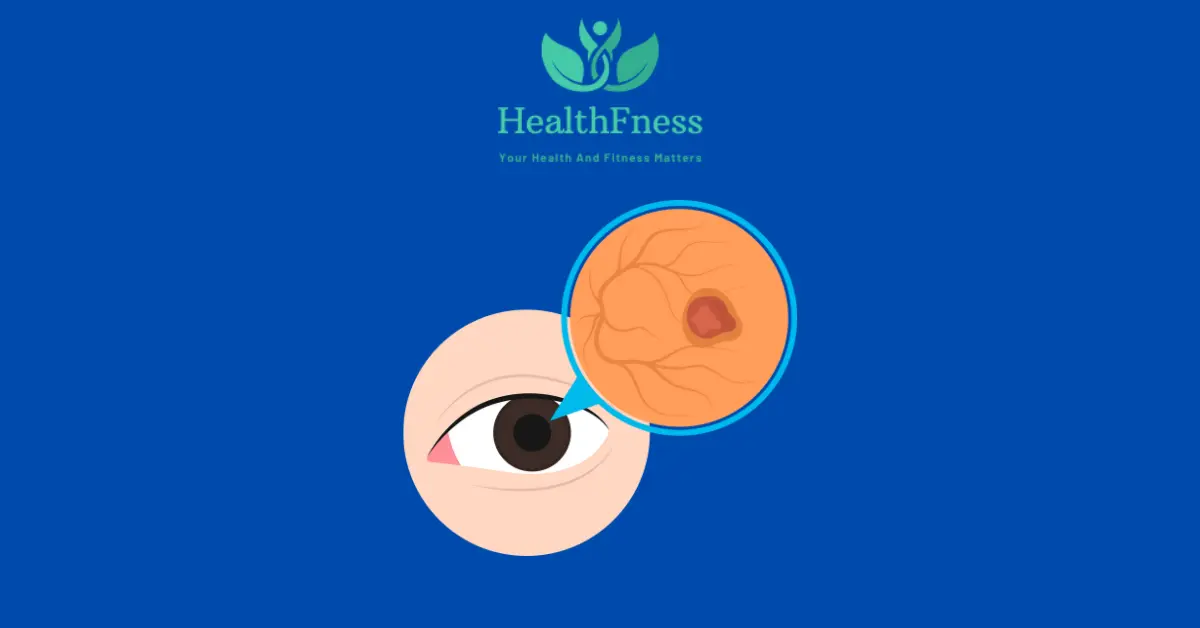What Is Retinopathy?
The blood vessels in the retina, the light-sensitive tissue at the back of the eye, can become damaged in a condition called retinopathy. The retina’s look and functionality may both change as a result of this damage. Numerous medical disorders, like diabetes, high blood pressure, and others, can contribute to retinopathy.
Explore The Link Between Cantaloupe & Diabetes: Cantaloupe And Diabetes: Can Diabetics Eat Cantaloupe?
What Is Diabetic Retinopathy
Diabetes is a chronic condition characterized by high blood sugar levels in the body. Over time, high blood sugar can damage blood vessels that are present throughout the body, including those in the eyes. When this happens, it can lead to a condition called diabetic retinopathy, which is the most common cause of blindness among working-age adults. Diabetic retinopathy can cause:
How Do You Go Blind From Diabetes
Diabetes can cause high blood sugar levels, which can injure the blood vessels in the retina, the light-sensitive tissue at the back of the eye that conveys images to the brain. Small blood vessels in the retina may leak fluid or blood in the early stages of diabetic retinopathy, resulting in swelling and vision blurring.
The blood vessels could eventually become blocked, which would cause the growth of new, abnormal blood vessels that could leak blood and other fluids into the retina and the person become blind.
A study done by Centers for Disease Control and Prevention (CDC) on Diabetes and Vision Loss , according to them is the leading cause of blindness in the United States and worldwide.
Diabetes can cause vision loss through diseases like diabetic retinopathy. Regular eye exams and diabetes management are crucial for prevention. Early detection is key, as treatments like laser therapy can help preserve vision and maintain eye health.
Factors Affecting Progression Of Diabetic Retinopathy
There are numerous factors that affect the progression here we will discuss all of them.
Controlling Blood Sugar
Diabetic retinopathy is caused by damaged blood vessels in the retina caused by high blood sugar levels. Good blood sugar management can lessen the risk of vision loss and slow the development of diabetic retinopathy.
You May Also Like To Read: Is Falling Asleep After Eating Sugar A Sign Of Diabetes ?
Blood Pressure Control
Diabetic retinopathy is brought on by high blood pressure, which can potentially harm the blood vessels in the eyes. Blood pressure management can lessen the risk of vision loss and slow the development of diabetic retinopathy.
Blood Lipid Control
The development of diabetic retinopathy can also be influenced by high blood triglyceride and cholesterol levels. The risk of vision loss can be decreased by controlling blood cholesterol levels.
You May Also Like To Read: Can A Diabetic Eat Ice Cream? Let’s Explore
Length Of Diabetes
The risk of developing diabetic retinopathy increases with the length of diabetes. However, diabetic retinopathy can manifest in those who have had diabetes for only a brief period of time.
Genetics
The onset and development of diabetic retinopathy may be influenced by a person’s genetic makeup. A family history of diabetic retinopathy may increase a person’s risk of developing the disease. It means this disease can be inherited.
You May Also Like To Read: Sulphur Burps And Diabetes: How Are Sulphur Burps And Diabetes Related?
Stages Of Diabetic Retinopathy
There are different stages of diabetic retinopathy ranging from mild to severe conditions. Let’s uncover all of these.
Non-Proliferative Diabetic Retinopathy (NPDR)
Non-proliferative diabetic retinopathy (NPDR) is the early stage of diabetic retinopathy, which develops when the retina’s tiny blood vessels deteriorate. In this stage, the retina’s blood vessel walls deteriorate and may leak blood or fluid, resulting in retinal edema. Though symptoms may not always appear at this stage, vision may be blurry or distorted.
You May Also Like To Read: Will Stopping Statins Reverse Diabetes?
Proliferative Diabetic Retinopathy (PDR)
As the damaged blood vessels in the retina begin to collapse, new, abnormal blood vessels begin to form, and this is the advanced stage of diabetic retinopathy. These new blood vessels are delicate and quickly rupture and bleed, which leads to the formation of scar tissue.
You May Also Like To Read: Can Diabetes Kill You In Your Sleep?
Diabetic Macular Edema (DME)
This is a complication of diabetic retinopathy that occurs when fluid accumulates in the macula edema, the central part of the retina responsible for detailed vision. The accumulation of fluid can cause swelling in the macula, leading to blurred or distorted vision. If left untreated, DME can lead to permanent vision loss.
How Long Does It Take To Go Blind From Diabetes?
Different factors can affect how quickly diabetic retinopathy progresses from non-proliferative diabetic retinopathy (NPDR) to proliferative diabetic retinopathy (PDR) and blindness.
NPDR Progression To PDR
About 50% of NPDR patients experience PDR within five to ten years of not receiving treatment. People who have poorly managed blood sugar levels, high blood pressure, and high blood lipids are more likely to advance.
PDR Progression To Blindness
PDR can cause significant vision loss or perhaps blindness if it is not promptly and effectively treated. People who have a severe retinal injury, such as new blood vessel growth, vitreous hemorrhage, or tractional retinal detachment, are more likely to lose their vision.
You May Also Like To Read: Can You Donate Plasma With Diabetes?
How To Prevent Eye Damage From Diabetes
Here are some methods for preventing or lowering the risk of diabetic eye damage:
Control Blood Sugar Levels
Maintaining healthy blood sugar levels can help lower the chance of developing diabetic retinopathy and halt its progression. This includes adhering to a balanced diet, taking prescription drugs as directed, and engaging in regular physical activity.
Control Blood Lipids And Blood Pressure
Diabetic retinopathy can develop and advance more rapidly in those with high blood pressure and high cholesterol. Eye damage can be avoided by managing these problems with medicine, a healthier lifestyle, and routine doctor visits.
Regular Eye Exams
Regular progressive eye exams can identify diabetic retinopathy in its early stages, enabling prompt treatment and averting additional harm.
Quit Smoking
Since smoking increases the risk of diabetes-related eye impairment, quitting smoking can help lower that risk.
Treatment Of Diabetic Retinopathy
Depending on the severity and stage of the disease, there are various therapy options for diabetic retinopathy. The following are some popular forms of treatment:
Laser Therapy
Laser therapy involves shrinking aberrant blood vessels that can impair vision or sealing off leaky blood vessels in the eye. Both proliferative diabetic retinopathy (PDR) and diabetic macular edema (DME) are frequently treated with laser therapy.
Intravitreal Injections
Drugs can be injected directly into the eye to treat inflammation and stop the development of aberrant blood vessels. Proliferative diabetic retinopathy (PDR) and diabetic macular edema (DME) are both frequently treated with anti-VEGF drugs.
You May Also Like To Read: Baking Soda And Diabetes: Good or Bad?
Vitrectomy Surgery
In order to improve vision, the vitreous gel and scar tissue are removed from the eye and replaced with a clear fluid. For severe cases of diabetic retinopathy that have not responded to conventional treatments, vitrectomy surgery is frequently utilized
Managing Underlying Conditions
Taking care of underlying diseases can help prevent or slow the development of diabetic retinopathy. These conditions include high blood pressure and excessive cholesterol.
Cons And Pros Of Treatment
| Treatment | Pros | Cons |
| Laser therapy |
|
|
| Intravitreal injections |
|
|
| Vitrectomy surgery |
|
|
FAQs
Does blurry vision from diabetes go away?
Blurry vision from diabetes can go away if you manage your blood sugar levels effectively. High blood sugar levels can damage the lens of the eye, causing it to swell and blur your vision. If you keep your blood sugar levels in the target range, the lens of your eye will return to its normal shape and your vision will improve.
What percentage of type 1 diabetics go blind?
The American Diabetes Association estimates that 10% of persons with type 1 diabetes will lose their vision severely or go blind. This is typically caused by diabetic retinopathy, a disorder that harms the blood vessels in the retina, the tissue layer at the back of the eye that is sensitive to light.
How long does it take to go blind from diabetes?
It is impossible to predict with certainty how long diabetes-related blindness will last. Everyone's diabetic retinopathy, the most prevalent eye consequence of diabetes, develops differently. While some people may not have any vision loss, others can entirely lose their vision.
How long does it take for diabetes to damage the eyes?
Diabetic retinopathy often takes 5 to 10 years to manifest. However, it may manifest earlier, particularly if your blood sugar levels are inadequately managed.
What is early stage diabetes eyes symptoms?
The early stages of diabetic retinopathy usually do not have any symptoms. However, as the condition progresses, you may notice blurry or fuzzy vision, difficulty in focus, dark or empty areas in your vision, and pain in your eyes.
How fast can diabetes cause blindness?
Diabetes can lead to blindness gradually over time if left untreated or poorly managed. However, the timeline varies from person to person.
Can diabetic blindness be stopped?
Yes, diabetic blindness can often be prevented or slowed down with early detection, proper management of diabetes, and timely treatment.
What are the signs of going blind with diabetes?
Signs of potential blindness due to diabetes include blurred vision, spots or floaters in vision, difficulty seeing colors, dark areas in vision, and sudden vision loss.
What percentage of Type 2 diabetics go blind?
Can eyesight recover from diabetes?
While early intervention and treatment can prevent further vision loss, complete recovery of eyesight damaged by diabetes may not always be possible. However, managing diabetes effectively can help preserve remaining vision and prevent further deterioration.
Conclusion
Effective management of diabetes, including controlling blood sugar and blood pressure levels, is essential in preventing diabetic retinopathy and subsequent vision loss. Early detection and timely treatment through options like laser therapy and surgery are key to preserving vision and reducing the risk of blindness. Regular eye exams and proactive diabetes management play critical roles in maintaining eye health for individuals with diabetes.
Is this article helpful to you? Please contact us if you have any questions. 😃

Dr. Mark Jenkins, MD - General Physician (California, USA)
Dr. Mark Jenkins is a board-certified general physician based in the United States, specializing in preventive medicine, nutrition, and lifestyle health. With years of clinical experience in primary care, he is dedicated to helping patients and readers alike make informed, science-based decisions about their well-being.
As a trusted medical reviewer and contributor to Healthfness.com, Dr. Jenkins ensures that all health content meets the highest standards of accuracy, safety, and evidence-based medicine. His expertise bridges modern medical science with practical, everyday wellness strategies, making complex topics approachable for all audiences.
Outside the clinic, Dr. Jenkins is passionate about living the healthy lifestyle he teaches. He enjoys hiking with his dog, experimenting with vegetarian cooking, and exploring the latest health research. He believes that small, consistent lifestyle changes lead to lasting health improvements, and he aims to inspire readers to take proactive steps toward a healthier, happier life.
Explore more of Dr. Jenkins’ evidence-based insights at Healthfness.com



